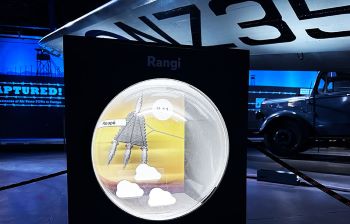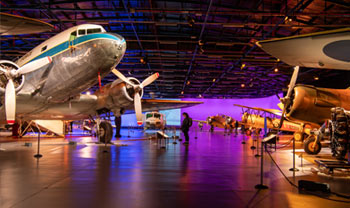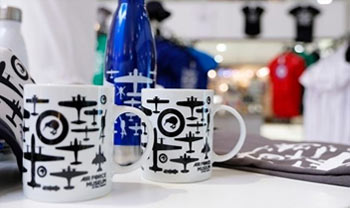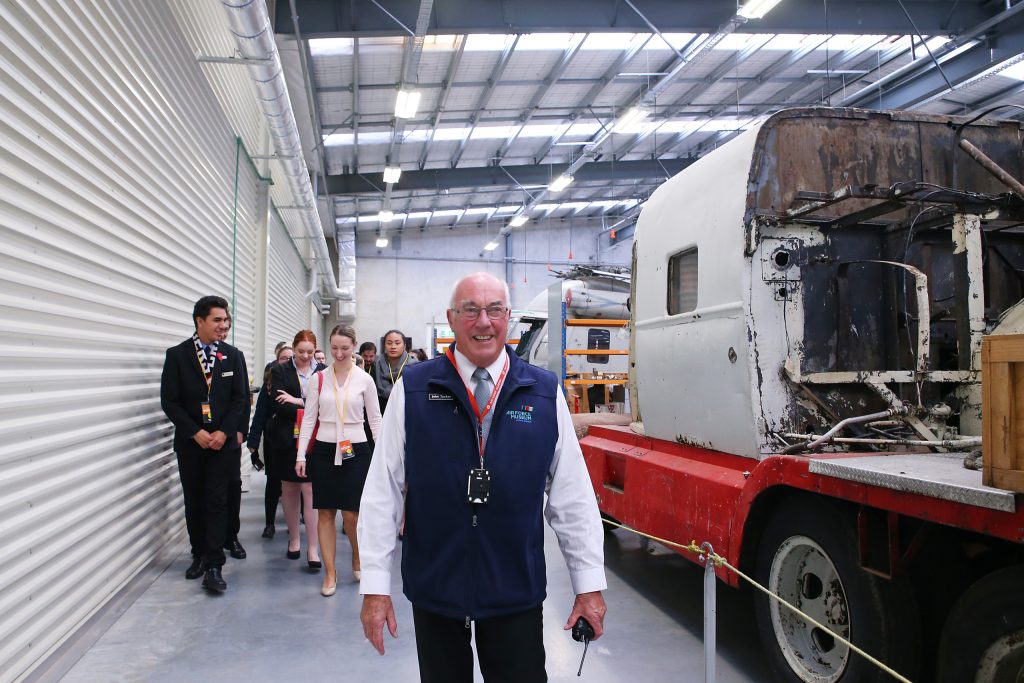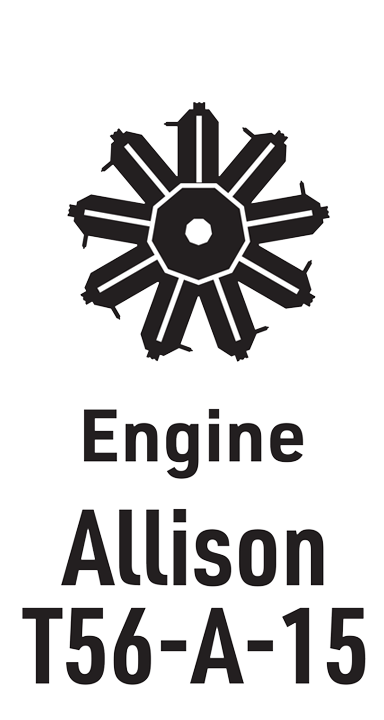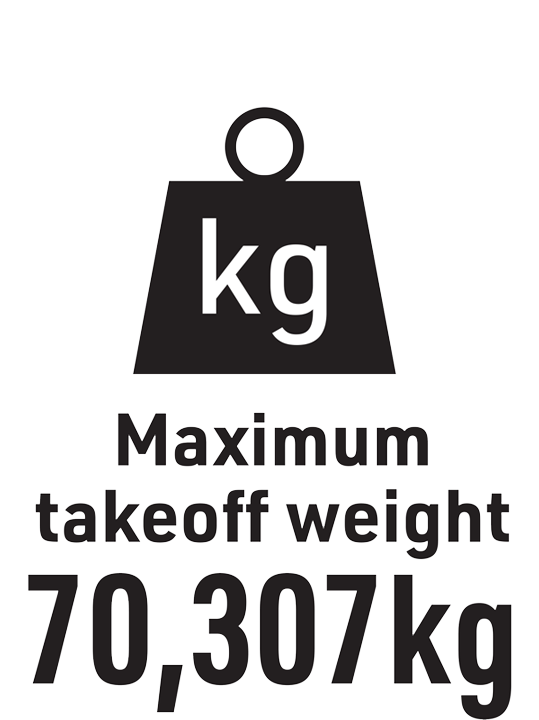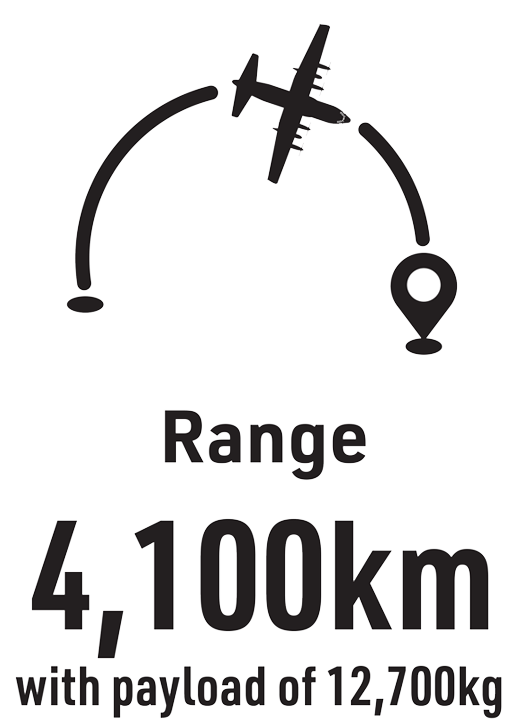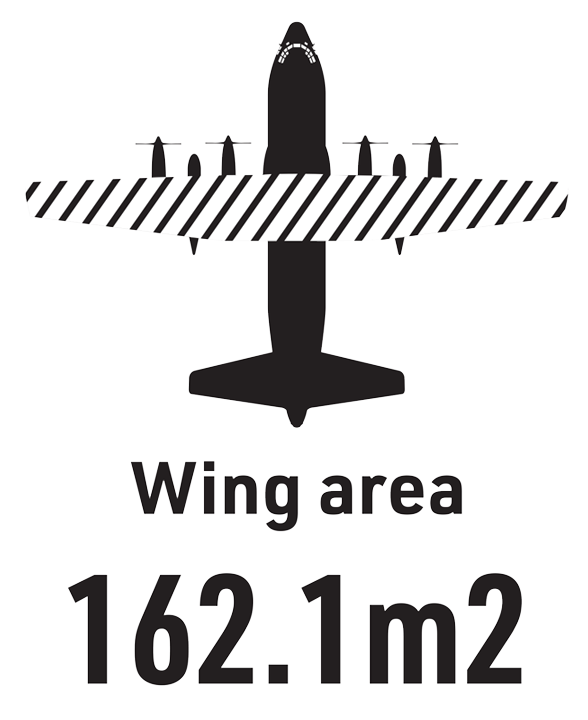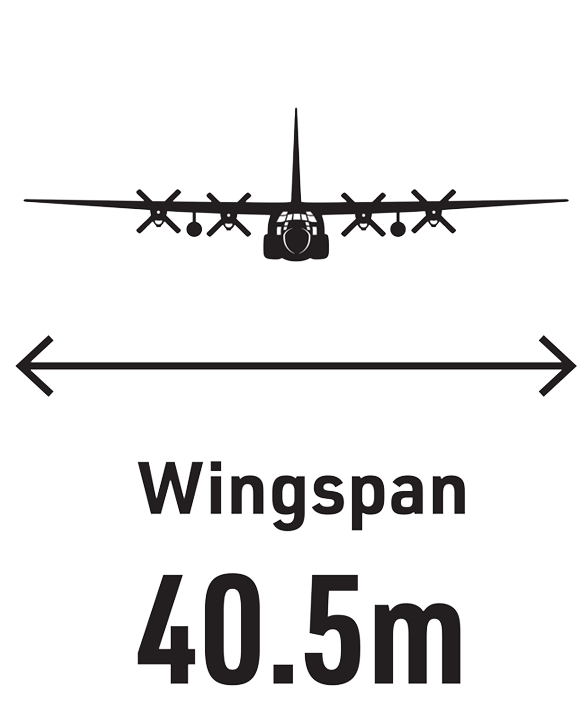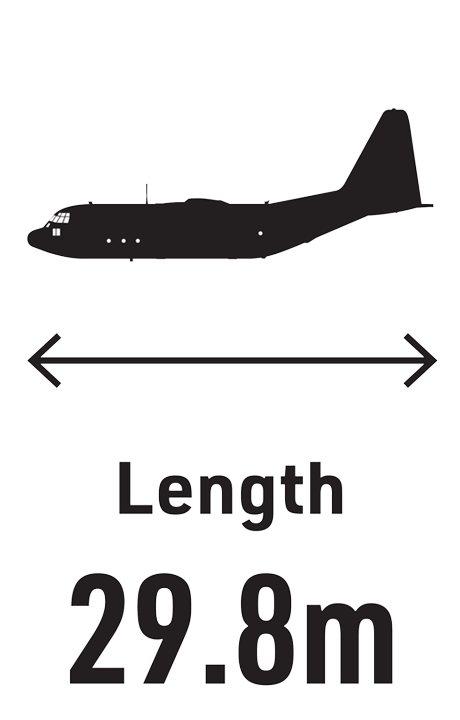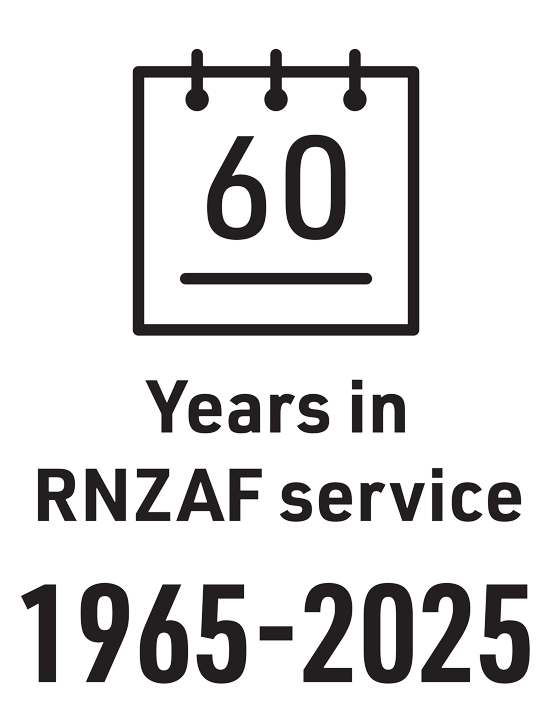Lockheed C-130H (NZ) Hercules
The Mighty Hercules
The birth of the Lockheed C-130 Hercules
The Lockheed Hercules story began in the early 1950s when the Korean War highlighted the limitations of the United States Air Force’s (USAF) existing tactical troop and cargo aircraft.
In February 1951, the USAF invited proposals for a design capable of carrying 90 paratroopers over 3,220 km, transporting a 13,610 kg load over a similar distance and operating from short and unprepared airstrips.
On 2 July 1951, Lockheed’s design was approved and a contract awarded for the construction of two prototypes that were given the designation of YC-130 Hercules. After extensive trials, seven production C-130A aircraft were ordered by the USAF and these entered service in December 1956.
Since then, the Hercules has gone on to become one of the world’s most recognisable military aircraft, seeing service with 70 nations around the globe. It also holds the record for the longest continuous production run of any military aircraft.
New Zealand and the Hercules
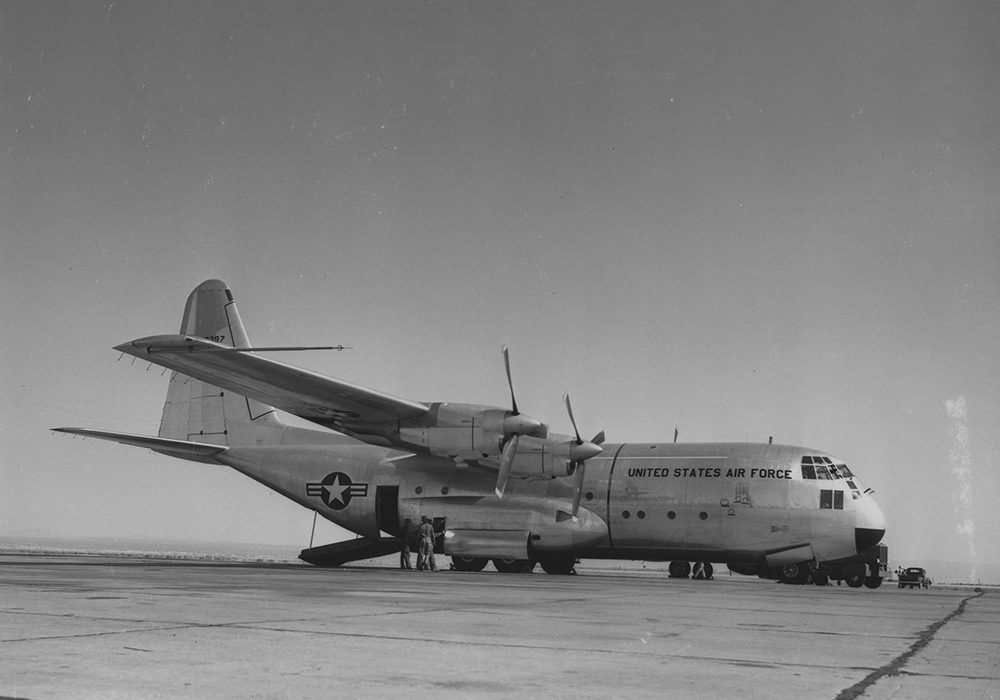
One of the two YC-130 Hercules prototypes. These early aircraft lacked the extended nose radome that was required to house the radar equipment fitted to later versions.
In 1963, the then RNZAF Chief of Air Staff, Air Vice-Marshal Ian Morrison, implemented a programme of modernisation focused on enhancing the transport, maritime and strike capabilities of the RNZAF. In the transport role, the Hercules was the obvious first choice. By this time, it had already demonstrated its capability with the USAF and other air forces for almost a decade, carving out a reputation for being a rugged and reliable aircraft.
It would introduce a major increase in range and load-carrying capability over the World War Two-era designs that it would be replacing like the Douglas DC-6 and C-47 Dakota.
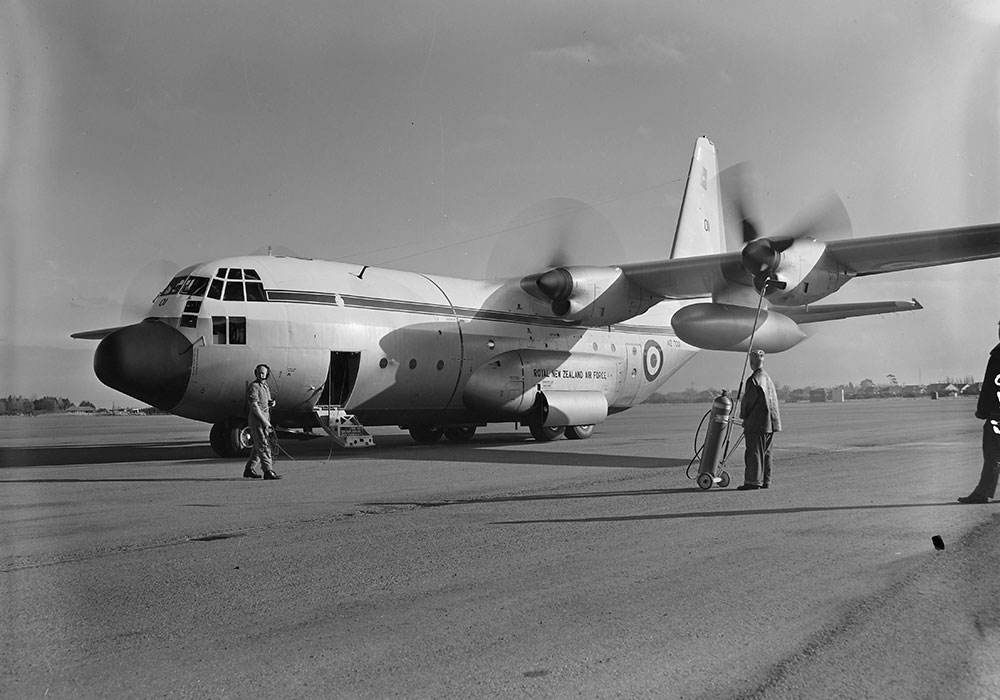
A very new looking NZ7001 at RNZAF Wigram in 1965.
An initial order for three Hercules was placed in mid-1963 and they were flown to New Zealand by RNZAF crews who had received training in the United States, arriving on 14 April, 1965. They officially entered service with No. 40 Squadron the next day. Two additional aircraft were ordered in 1967, arriving in January 1969.
The fleet of C-130 aircraft received new outer wing sections in 1981 and a life extension programme started in 2005. This involved an extensive avionics upgrade of the flight deck and structural refurbishment. The aircraft were then re-designated as the C-130H(NZ).
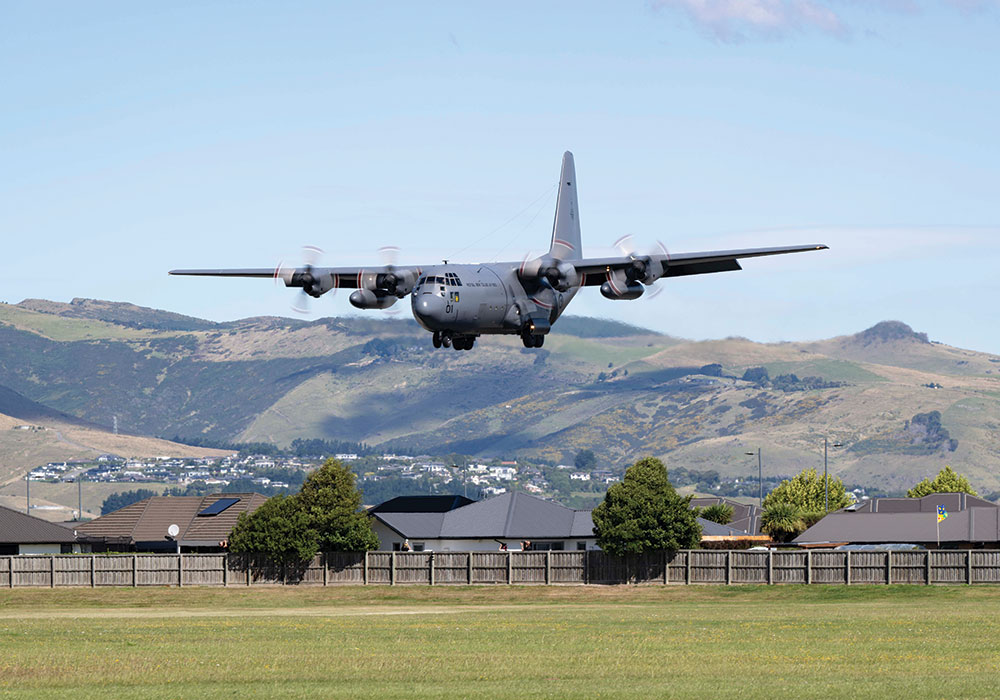
NZ7001 lands at the Air Force Museum of New Zealand on 19 February 2025.
NZ7001
As well as being the first RNZAF C-130 Hercules, NZ7001 was also the first of the ‘H’ model Hercules to be manufactured by Lockheed. As a result, it was used for extensive flight testing before being released to the RNZAF. Its first operational deployment took place in July 1965 when it helped to transport 161 Battery, New Zealand Army, to Bien Hoa in Vietnam.
Throughout its 60-year operational career, NZ7001 completed more than 33,000 flying hours while delivering humanitarian aid, supporting New Zealand’s Antarctic programme and delivering essential cargo into combat zones as part of New Zealand’s commitment to its allies and partners around the world.
Of the five RNZAF C-130H Hercules aircraft, NZ7001 will be the only example placed into a museum for preservation.
Stats & Specs
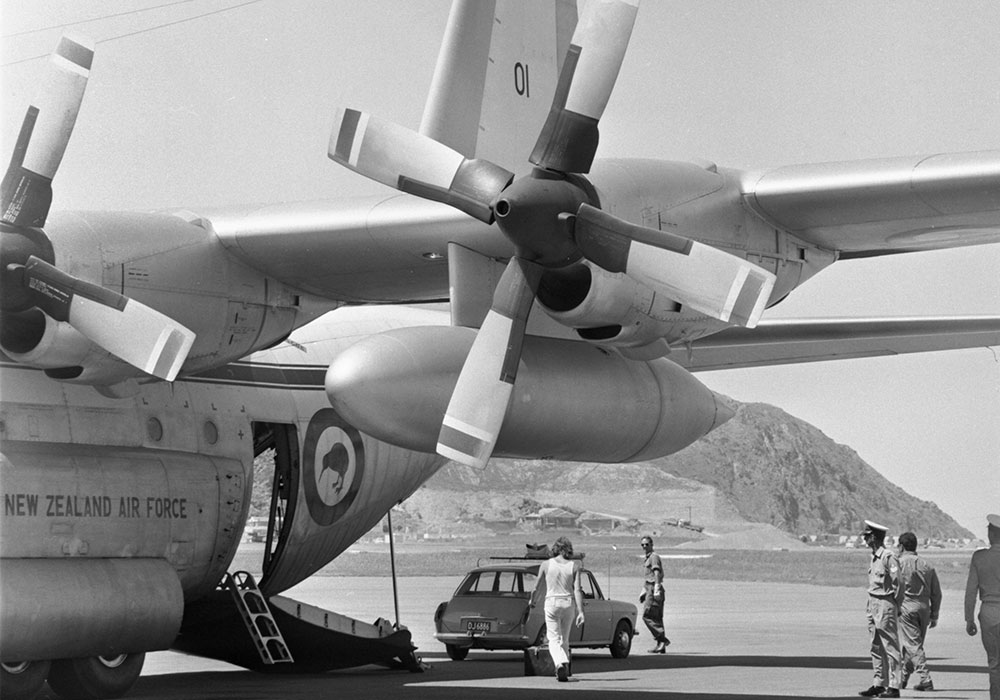
No. 40 Squadron Hercules NZ7001 transports a Morris 1100 car, during Exercise Pluto 2, November 1971, at Wellington Airport. PR259-32-71
LIFESAVER: Hercules to the Rescue
The C-130H Hercules has been used in many national and international non-military situations by the RNZAF, proving its abilities and versatility around the world.
Following a tropical storm in April 1968, Hercules replaced passenger flights across the Cook Strait. During 1969, threats of, and actual industrial action to the Cook Strait ferry led to a Hercules and two Freighters to be introduced as an aerial supply and passenger service between the North and South Islands. Named Operation ‘Pluto’, the measures have been repeated, as late as 1991.
Since their introduction, the Hercules has been the ideal aircraft to assist New Zealand’s Pacific neighbours in the event of natural disasters. Beginning with the Cook Islands in May 1969, the Hercules became a symbol of the need to be able to assist and support.
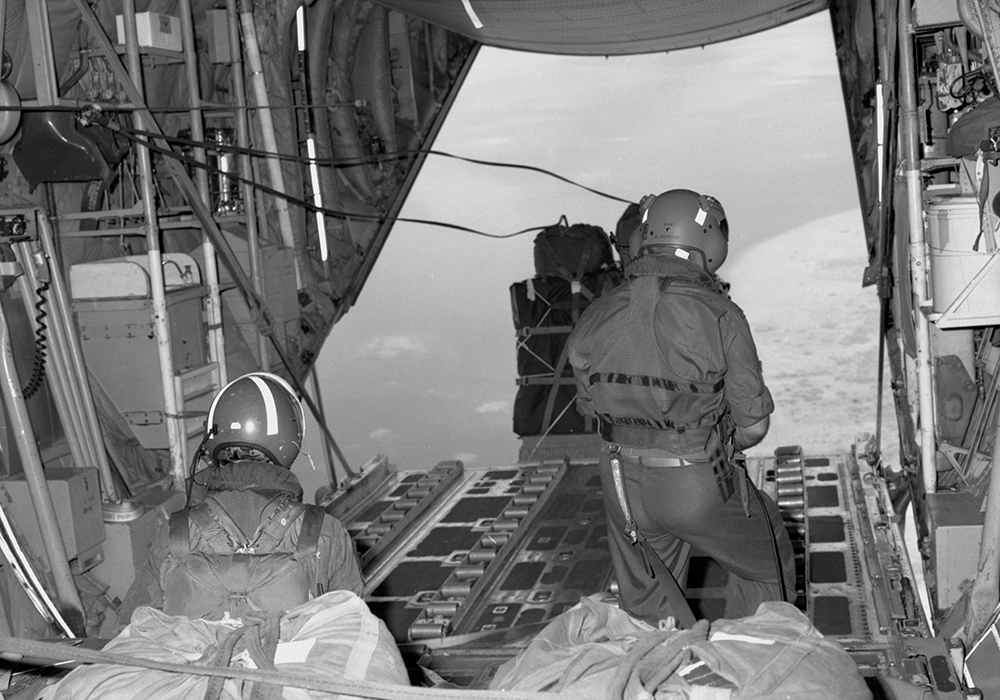
Air-dropping supplies to the Tokelau Islands in 1987. PR21-R10-10-87
Constant weather and seismic events in the Pacific Islands, coupled with medical evacuations kept the fleet busy. More recent assistance has also been given to both Samoa and Tonga after natural disasters.
More remote aid was given to the Republic of Bangladesh in 1972 with over a million tons of aid to the war-ravaged country. After the Darwin cyclone of 1974 in Australia, RNZAF Hercules assisted in the evacuation of displaced people. In 1979, it was an RNZAF Hercules which evacuated the New Zealand Embassy staff from Tehran following the Islamic Revolution in Iran.
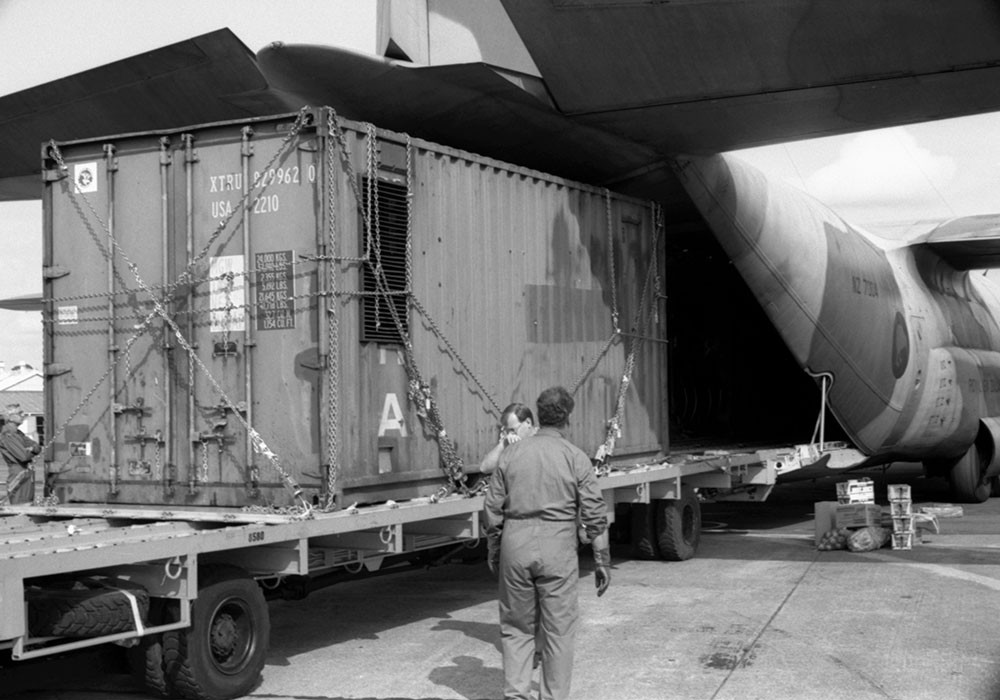
A power generator destined to help with clean-up efforts following Cyclone Val in Western Samoa is loaded at Whenuapai, RNZAF Base Auckland, in 1992. PD7a-16-92
Disaster visited New Zealand in February 2011 when a second major earthquake in months crippled Christchurch, killing 185 people and levelling parts of the city. Within hours, Hercules were moving personnel and equipment to the region to assist in the rescue and beginnings of recovery.
More recently, the C-130H has participated in increasingly frequent missions in New Zealand in the wake of extreme weather events, such as Cyclone Gabrielle in 2023.
Model of Hercules NZ7006
This approximately 1/8th scale wooden model was built in the carpenters’ shop at Hobsonville, RNZAF Base Auckland. It was made for display at the air show celebrating the opening of Auckland International Airport in January 1966. The names of the carpenters are written on the inside of the model: Corporal Davis, Corporal Symonds, Leading Aircraftman Dick Graham, Leading Aircraftman McMorran, Leading Aircraftman Parsons and Leading Aircraftman Les Jowers.
The model was originally painted in a scheme of silver and white with tail number NZ7004, which was the next number in the series when the Hercules fleet consisted of three aircraft. In the mid-1990s the model was painted in its current blue/grey/green scheme and had the serial number 01. In the early 2000s the model was given the tail number 06, the next number in the series of the recently retired C-130H fleet.
Reputedly the model featured in a variety of events around the country, along with an Orion model of the same scale.
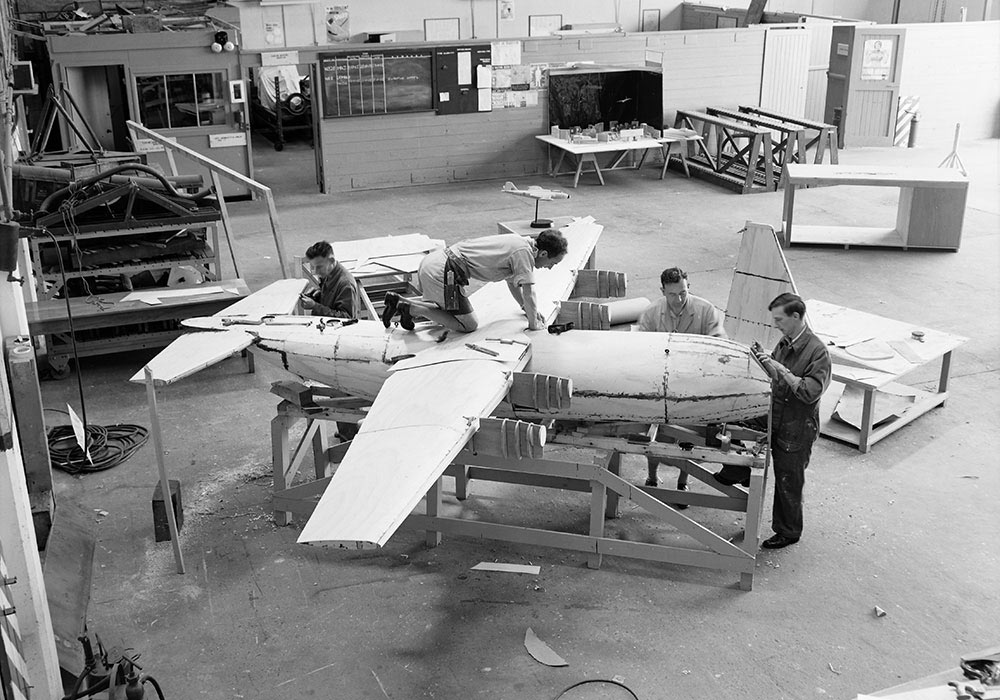

Image 1: 1/8th scale model Hercules being built in the woodworking shop at Hobsonville, RNZAF Base Auckland, 5 November 1965.
Image 2: Completed model Hercules on display at the air show for the opening of Auckland International Airport, 29 January 1966.
Hercules on Ice

NZ7003 being unloaded at Williams Field, Antarctica in 1965.
From Aotearoa to Antarctica
The Hercules introduced a new era of Antarctic flying for the Royal New Zealand Air Force, enhancing one of the New Zealand Defence Force’s (NZDF) longest-running missions: Operation Antarctica.
Within six months of coming into service, Hercules NZ7003 made the first New Zealand-Antarctic flight by an RNZAF aircraft on 27 October 1965 – New Zealand could now transport its own people with its own aircraft to the ice. Since then, RNZAF Hercules flights have been made annually in support of New Zealand’s Antarctic Research Programme and the United States’ Operation Deep Freeze. Today it is the NZDF’s largest mission over the summer season, with around 200 personnel deployed.
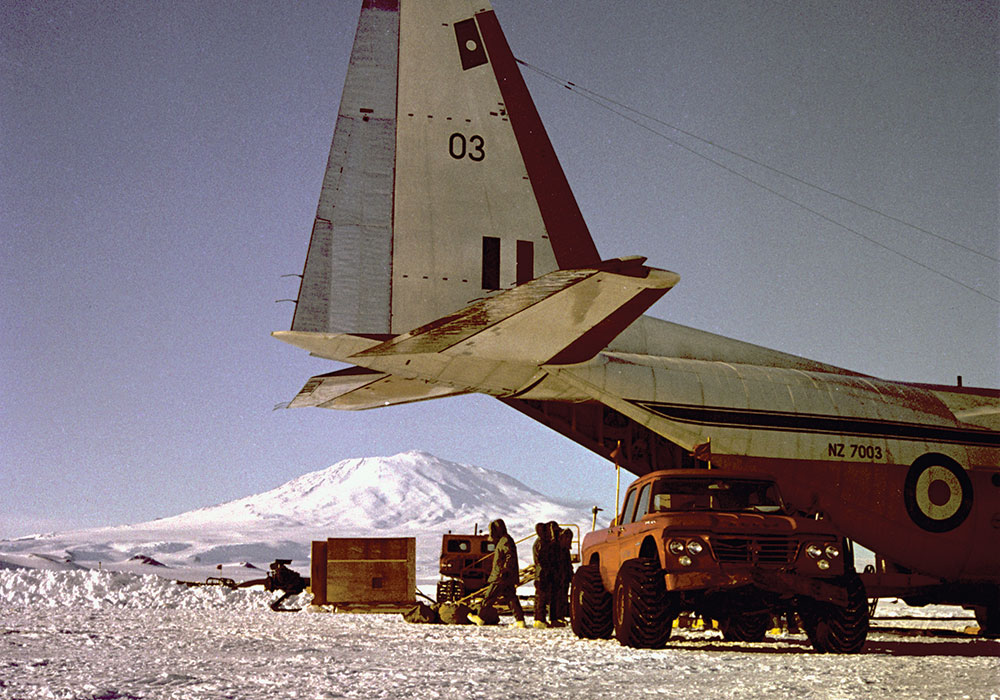
NZ7003 being unloaded at Williams Field, Antarctica in 1965. Mt Erebus is in the background.
Antarctica’s geographic isolation and unpredictable, extreme weather present great challenges to Hercules crews. Every flight south passes a ‘point of safe return’ – Hercules do not carry enough fuel for the return trip – so the captain must then decide whether to continue flying, based on weather reports and known conditions at the base.
Operations were timed to coincide with improving weather, but before melting sea ice weakened the ice runway, which was used until the 2010s. Here, the wheeled C-130H offered key advantages: it was able to carry a greater payload than the US Navy’s ski-equipped C-130s and could continue operations to a later date than heavier aircraft, extending the period in which priority freight could be airlifted.

Three RNZAF C-130H Hercules at McMurdo Airfield with Mt Erebus in the background, circa 1985
Over 60 Antarctic seasons, the RNZAF also prepared for and responded to emergencies on the ice. Within hours of the 1979 Mount Erebus disaster, Hercules NZ7004 headed for Antarctica, carrying a civilian police contingent and air accident investigation team. Others in the fleet later assisted in recovering victims’ remains back to New Zealand.
The Hercules have also flown medical evacuation flights. In rare cases, these became night-flying rescue missions during the Antarctic midwinter.
Special Cargo
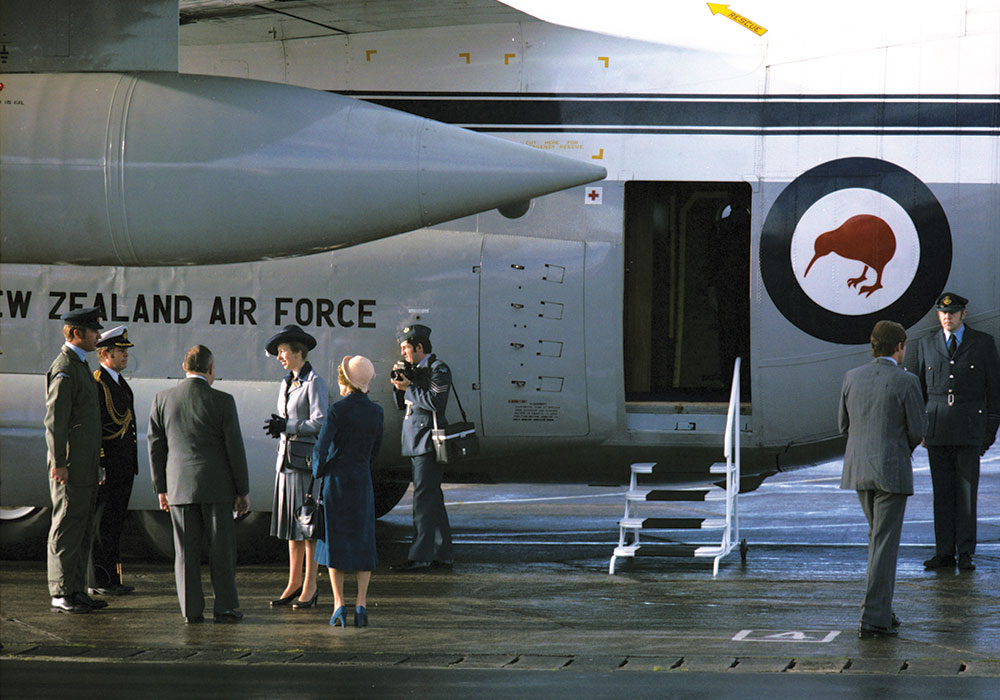
Her Royal Highness Princess Anne about to board NZ7001 at Whenuapai, RNZAF Base Auckland on 19 July 1979.
The secret life of a C-130H Hercules
Fragile cargoes and sensitive missions were a specialty throughout the life of the RNZAF’s C-130H Hercules. From elephants to specialist diplomatic missions, the versatile Hercules was there to help.
In 1973, when the Cold War was starting to thaw slightly, the Hercules became the first RNZAF aircraft to visit Communist China and the Soviet Union. The aircraft flew to support the opening of New Zealand’s embassies in Beijing, then known as Peking in July and Moscow in December of that year.
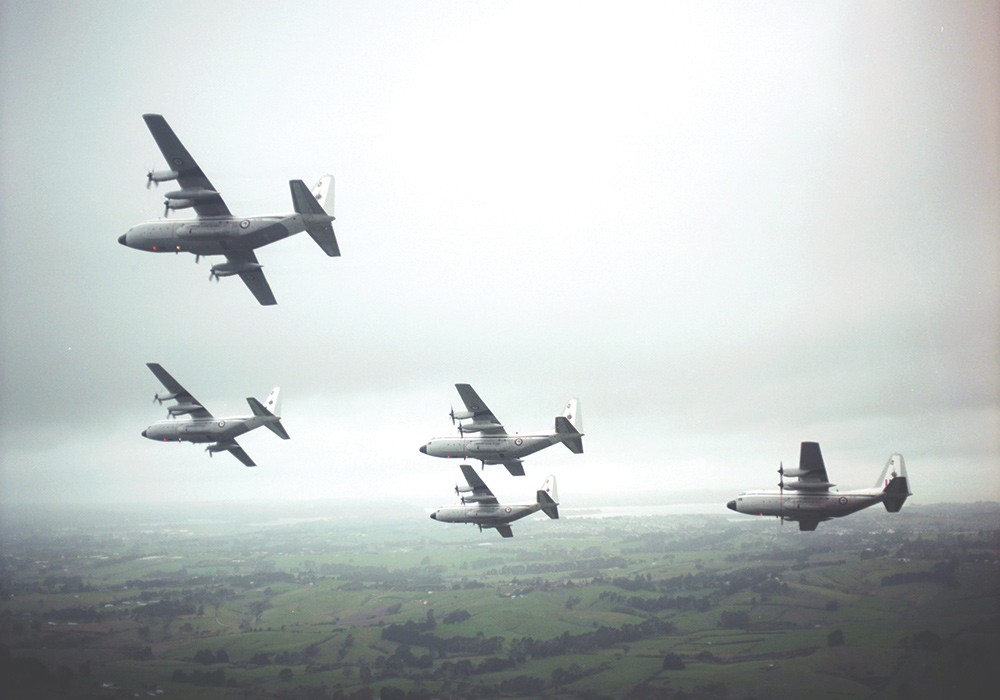
RNZAF publicity photo of all five Hercules in flight.
In the years prior to the arrival of the RNZAF’s Boeing 727s VIP transporters in the early 1980s, the C-130s transported royals and politicians. A VIP box – which was a palletised module with plush seats – could be installed quickly when the need arose. In October 1978, Her Royal Highness Princess Margaret fell ill with pneumonia while on a visit to Tuvalu. A C-130H evacuated her to a Sydney hospital to recover. Princess Anne also flew in the VIP-modified Hercules in 1979, before the jets took over two years later.
Wildlife missions were also a specialty. These ranged from transporting a special cargo of trees to create a new habitat on the Chatham Islands for the highly endangered black robin to relocating exotics including Anjalee the elephant for Auckland Zoo in 2015.
The RNZAF’s fleet of Hercules were also used to win hearts and minds at airshows and flypasts – and help fill recruitment quotas.
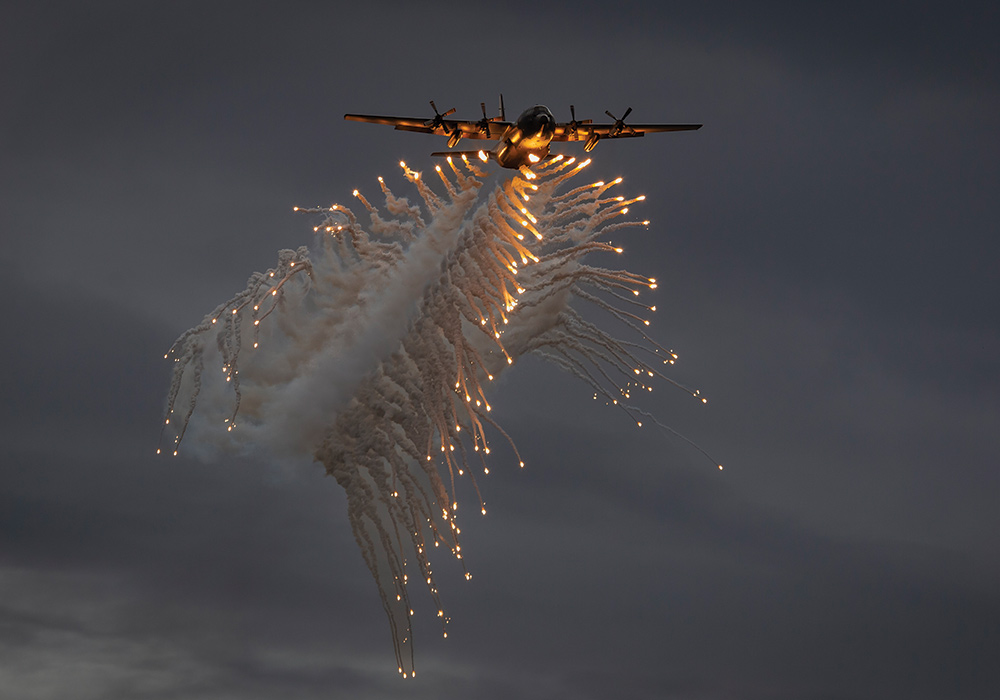
The Hercules lights up Lake Wanaka at its last airshow, Easter 2024.
In May 1965 No. 40 Squadron’s unit history records that a brand-new aircraft was sent to fly the length of the country to ‘show off the C-130 to the New Zealand taxpayer’. That showing off continued for the rest of the fleet’s operational life.
The C-130’s last appearance at Warbirds over Wanaka in 2024 featured a dazzling flare display that wowed the crowds and provided abundant social media content for recruiters.
It was a fitting end to a six-decade air show career that had delighted hundreds of thousands of people.
Hot Spots
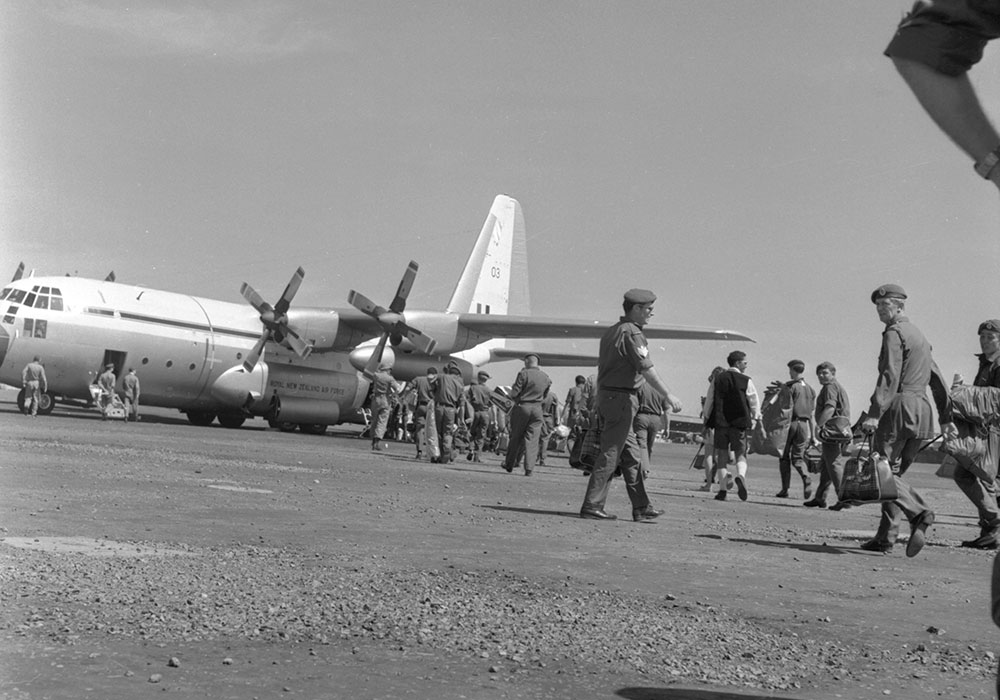
Changeover of New Zealand Army V Company, Vietnam. Personnel walking to No. 40 Squadron Hercules NZ7003 in 1971.
War and the search for peace
In July 1965, the first C-130H aircraft flew into South Vietnam. This marked the first combat deployment of the type in Royal New Zealand Air Force service. Codenamed Operation ‘Hot Pot’, they carried advance members of 161 Battery, New Zealand Army, who would be the first combat soldiers to deploy to the war from New Zealand. For the rest of the conflict, Hercules carried troops and supplies in and casualties out, ending when hostilities ceased in 1975.
In December 1990, two C-130H aircraft flew to Riyadh in Saudi Arabia to operate alongside the Royal Air Force in Operation Desert Storm against Iraq. The aircraft spent the period of the conflict delivering supplies and personnel to the war zone and returned to New Zealand in February 1991.
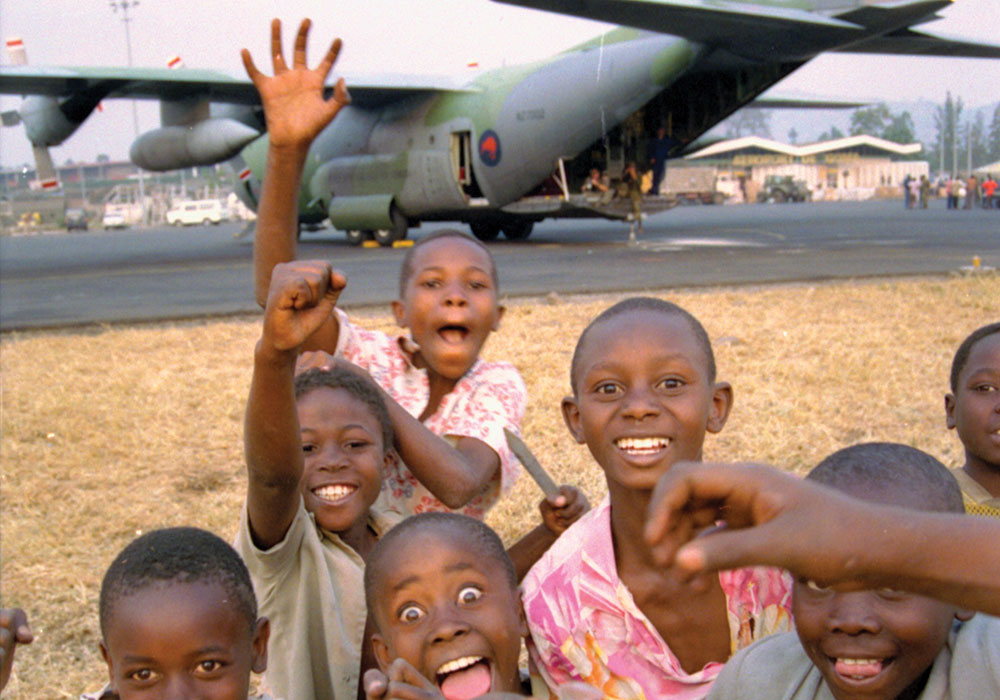
No. 40 Squadron Hercules NZ7002 on the tarmac at Goma, Zaire with local children in 1994 as part of Operation Reforge, delivering food supplies to refugees from the Rwandan genocide.
In January 1993, three Hercules deployed to war-torn Somalia in support of peacekeeping there.
In July 1994, a No. 40 Squadron C-130H arrived at Entebbe in Uganda. For the next two months they supplied refugees fleeing from the recent Rwanda Genocides with 1,587 tonnes of freight.
In 1997, Hercules participated in the setting up of the Truce Monitoring Group in war-torn Bougainville, whose people sought independence from Papua New Guinea, airlifting in RNZAF Iroquois helicopters and maintaining a supply line.
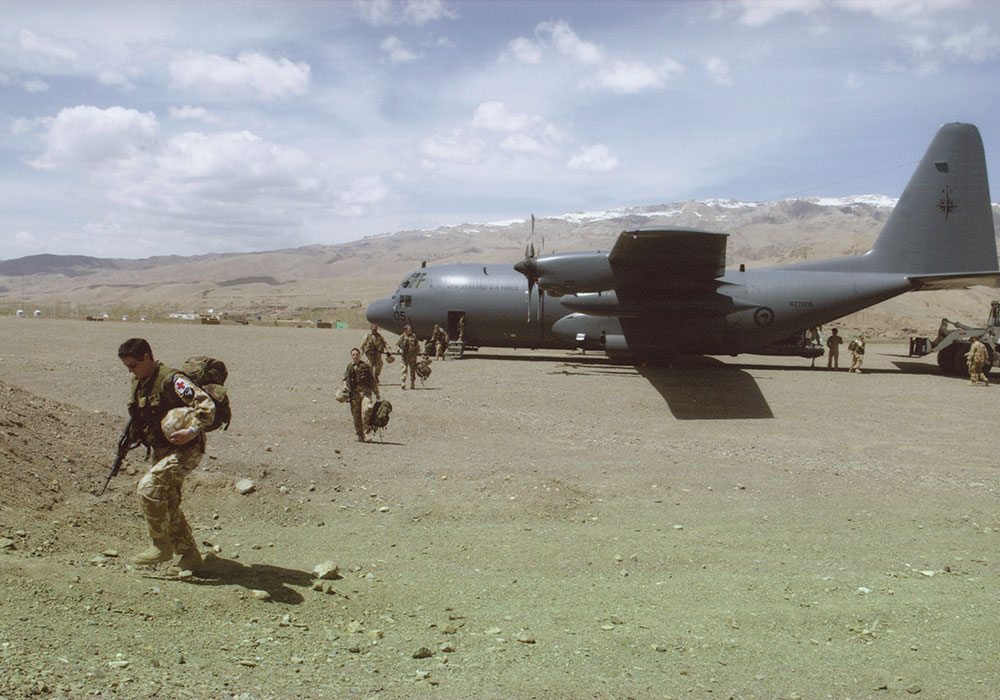
New Zealand Army personnel disembarking from No. 40 Squadron Hercules NZ7005 at Bamyan, Afghanistan in 2006.
Another Pacific conflict, which re-erupted in East Timor in September 1999, required the transport of New Zealand troops to Dili by two C-130H and a Boeing B727 aircraft. The Hercules played a key role in supplying the peacekeepers in East Timor.
Following the 9/11 attacks in 2001, as part of Operation Enduring Freedom, the C-130H played a key role in supplying New Zealand forces for provincial reconstruction work in Bamyan, Afghanistan. With the withdrawal of American-led forces in 2021, RNZAF C-130s evacuated personnel from Kabul.
What’s Next?
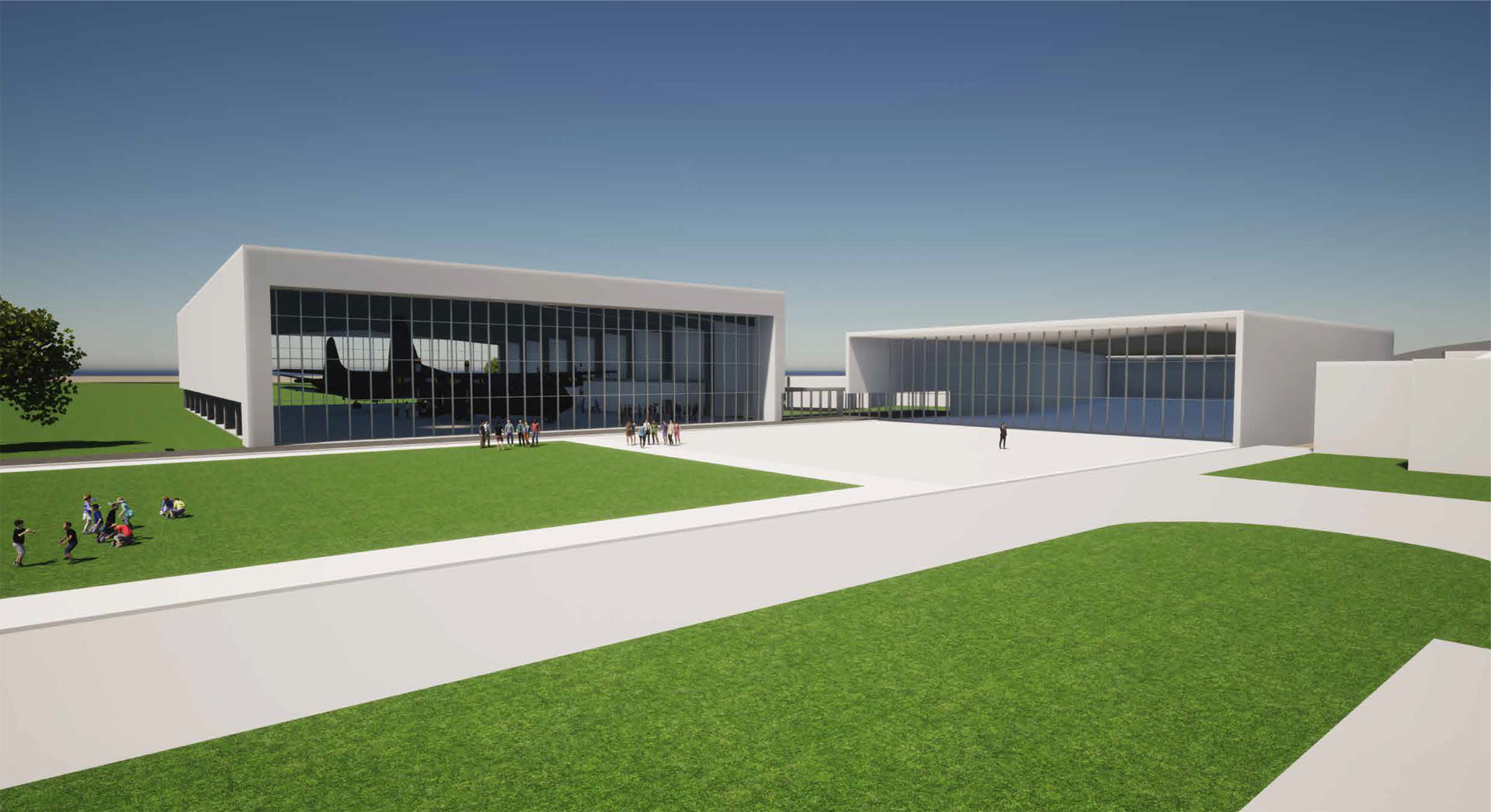
How can I help?
The Air Force Museum’s collection is owned and cared for by a notfor-profit trust, and we can’t build our extraordinary aircraft the home it deserves without your help.
Our problem is even bigger than just the Orion – the aircraft will soon be joined by a Lockheed Hercules C-130H – which is even taller and larger to store. Our vision is to develop a new purposebuilt space large enough for both aircraft.
We’re calling it the #extraordinaryaircraft campaign – and we’d appreciate you supporting us in any way you can!
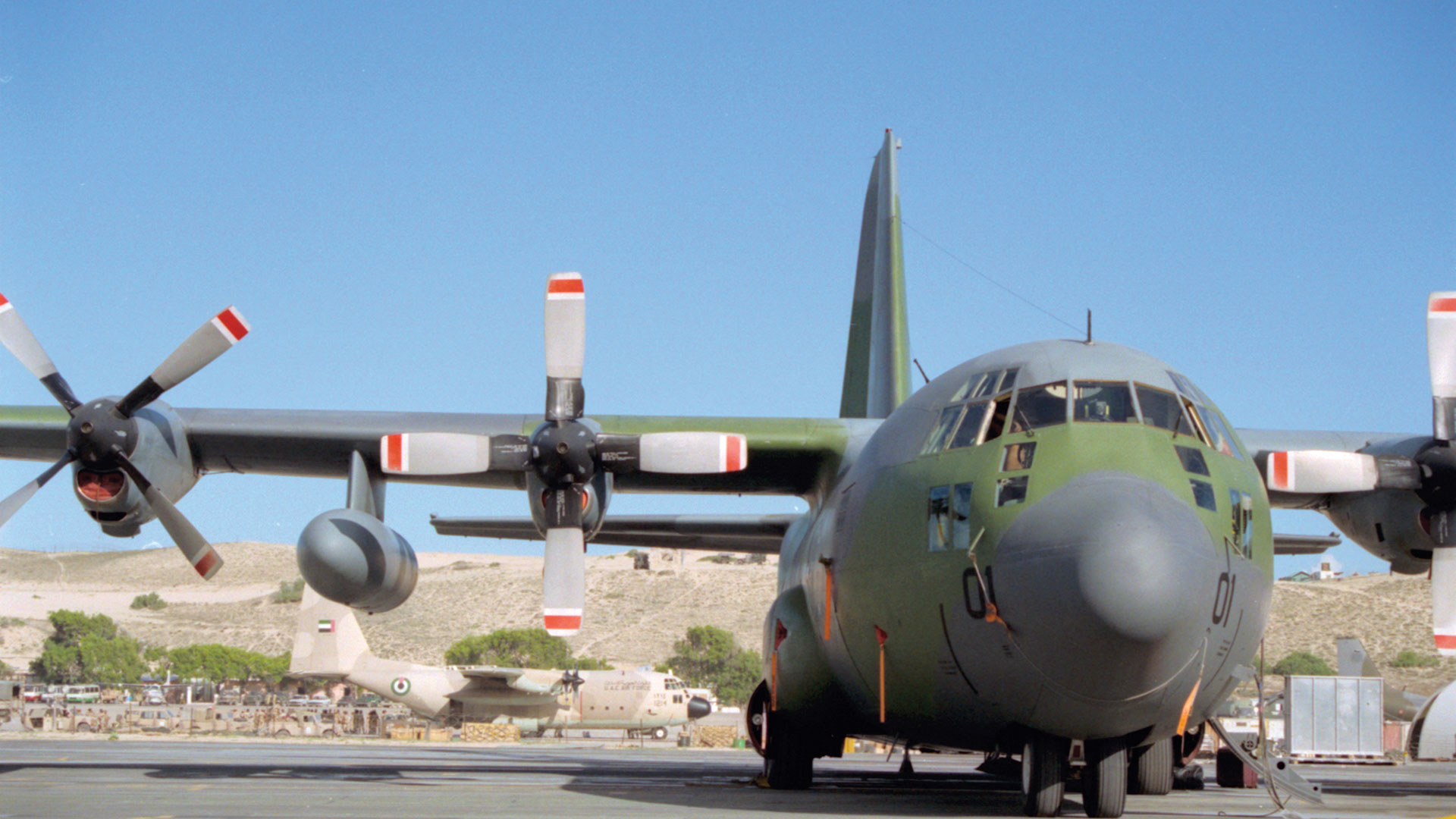
You can help by:
- Donating to us – see the Donate button below
- Supporting us by buying any of our merchandise – the profits will help towards the building fund
- Telling your friends about the aircraft and urging them to get along and visit our special Hercules exhibition
- Lobbying your local councillors and MPs on our hercules’ behalf
- Telling us about corporate partners who you think may be able to help
- Signing up to receive our electronic newsletters
- Following us on Facebook and Instagram for the latest news – #extraordinaryaircraft
More to explore
